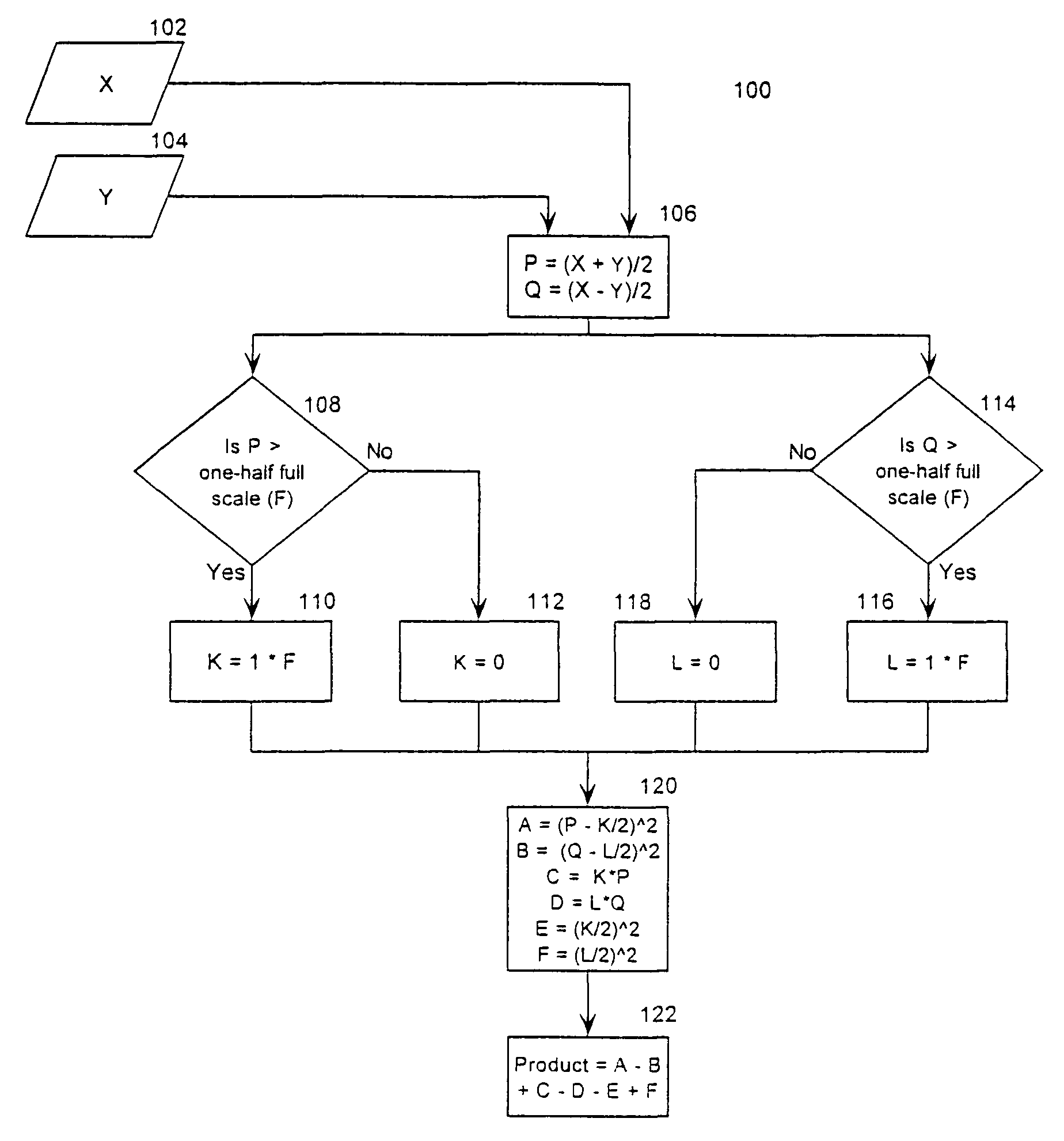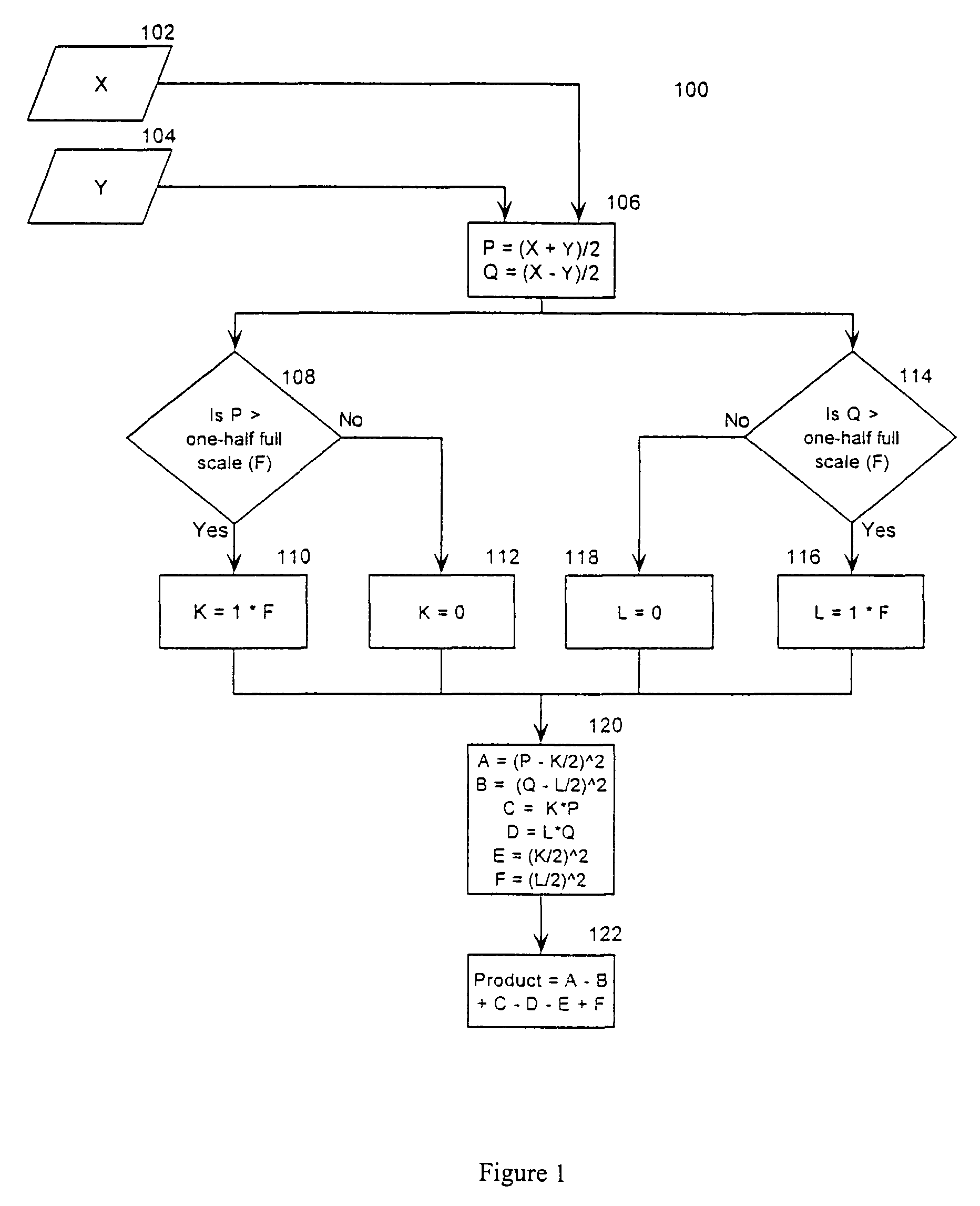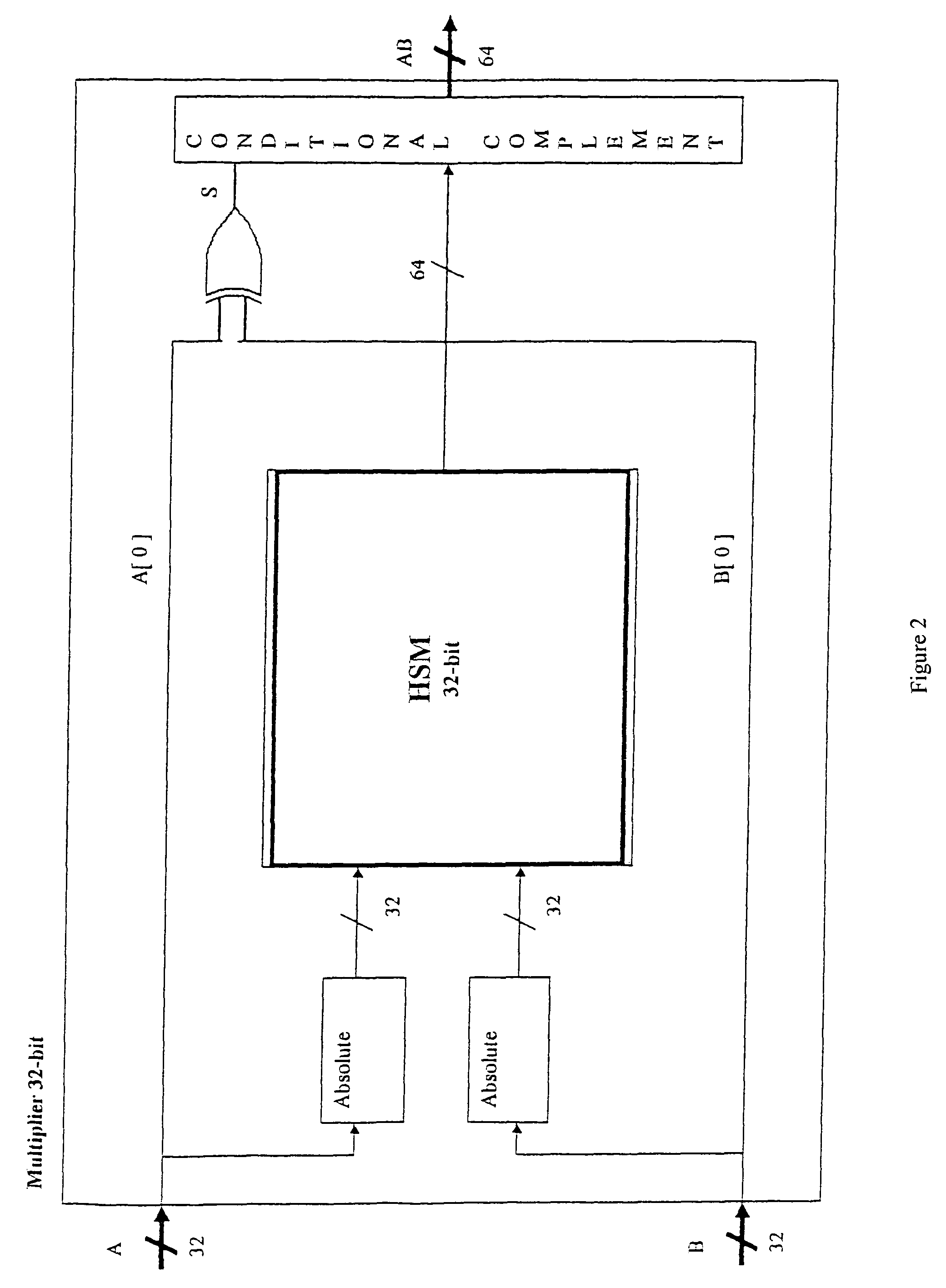Dynamically reconfigurable power-aware, highly scaleable multiplier with reusable and locally optimized structures
a dynamic power management and multiplier technology, applied in the field of digital signal processing, can solve the problems of chip designers not figuring out how to take advantage of the dynamic power management feature in the os (wince), and the direct impact of the battery power of portable systems, so as to reduce the dissipation and lower the power dissipation
- Summary
- Abstract
- Description
- Claims
- Application Information
AI Technical Summary
Benefits of technology
Problems solved by technology
Method used
Image
Examples
example 1
[0056]Exponentiation. Let X=Y−0.5, where Y is the original value (in the range of 0.5 to 1), which will take advantage of the folding principle by determining the exponentiation for X (in the range of 0 to 0.5), so avoiding a larger look-up table, or a more involved computation. Thus, Exp (Y)=Exp (X+0.5)=Exp (X)*Exp (0.5)=K*Exp (X), where K=Exp (0.5) is a constant. However, this will not be a simple bit pattern, but a complicated sequence of 1's and 0's. Thus, this becomes a general multiplication, not a mere shift which we exploited in the HSM examples. Note that Exp (X) can now take advantage of further folding as needed. Thus the HSM may be used with the front end for folding the exponentiation function as needed. If a strict application of the HSM principle were followed, then Exp (Y) would have to be expanded as a Taylor series (sum of terms of increasing powers of Y and a constant), and folding principle applied wherever a square term appeared, and the HSM principle applied wh...
example 2
[0057]Cubic Polynomial. In a general expression of 3rd order, as an example, both the linear and squared terms may be handled easily, the latter as an input to an adder, with the latter taking advantage of the HSM concept. In this example, the ‘cubed’ term is considered—such as Y3 for this example. Let Y=(X+0.5) as before. Then Y3=(X+0.5)3=(X)3+(0.5)3+3*(X)2*(0.5)+3*X*(0.5), where the “*” represents multiplication. The folding principle was applied to the 3rd order term, with the HSM principle applied to the four terms of the resulting expansion. If a strict application of the HSM principle was followed, this would have been expanded as follows: Y3=Y*(Y)2, with the folding principle applied to the second term only, and the HSM concept exploited for the multiplication of the two terms on the right hand side.
[0058]The present invention has many utilities. A few comments from a recent review paper in the prestigious Proceedings of the IEEE show the applicability of the present inventio...
PUM
 Login to View More
Login to View More Abstract
Description
Claims
Application Information
 Login to View More
Login to View More - R&D
- Intellectual Property
- Life Sciences
- Materials
- Tech Scout
- Unparalleled Data Quality
- Higher Quality Content
- 60% Fewer Hallucinations
Browse by: Latest US Patents, China's latest patents, Technical Efficacy Thesaurus, Application Domain, Technology Topic, Popular Technical Reports.
© 2025 PatSnap. All rights reserved.Legal|Privacy policy|Modern Slavery Act Transparency Statement|Sitemap|About US| Contact US: help@patsnap.com



